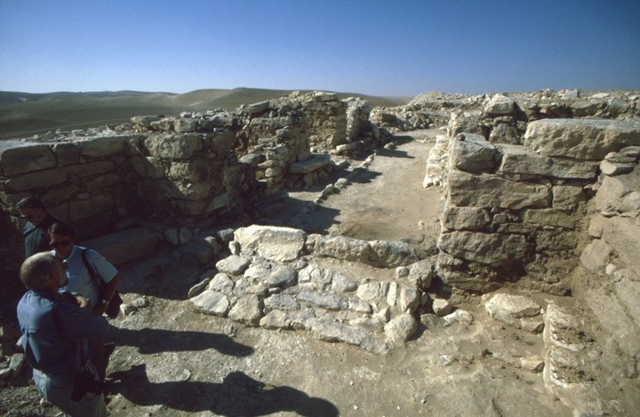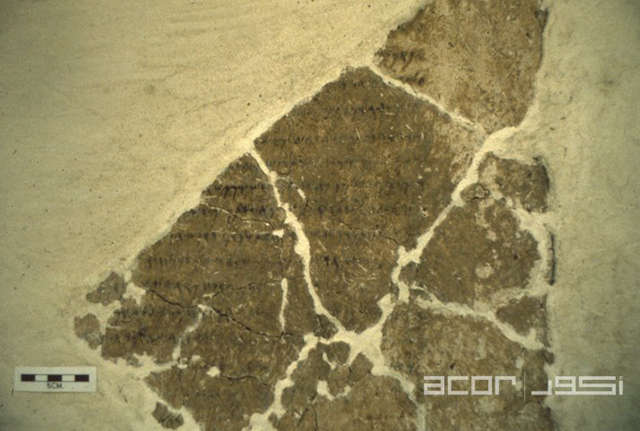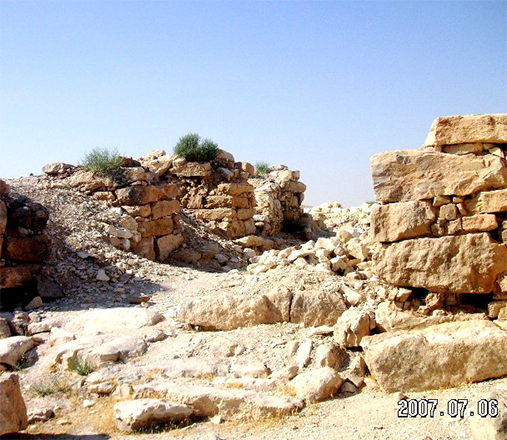You are here
Cultic sites in Transjordan reveal ritual practices of ancient peoples
By Saeb Rawashdeh - Feb 17,2025 - Last updated at Feb 17,2025

Remains of the fortified Iron Age town Khirbet Al Mudayna (Photo courtesy of ACOR)
AMMAN — Some of cultic places during the Bronze and Iron Age on a territory of Transjordan are Ataruz, Deir Alla, Ammon, Mudayna and Busayra.
Cult places such as temples, shrines, or open-air cultic complexes are an important part of the "religious landscape’" of ancient peoples.
" The identification of excavated buildings as cult places is not unambiguous. Much research has gone into the question of how cult practices and ritual behaviour express themselves in the material culture and how to follow the trail, so to speak, from cult to excavated remains," said Margreet Steiner from Leiden University.
Steiner added that the problem many field archaeologists are struggling with is rather how to interpret archaeological remains and which criteria to apply in order to define these remains as related to cultic practices.
Rituals concerning the communal consumption of meat may leave traces in the ground in the form of hundreds of animal bones. But not every find of large amounts of animal bones should be interpreted as evidence of those rituals and thus of the cultic nature of the site in question.
Other explanations are possible, such as butchering for household consumption, the communal consumption of meat not connected with a religious ritual but, for instance, a wedding, or it being the remains of a dump site, Steiner continued.
She added that the placing of figurines as votive objects in a shrine often results in the excavations of many such objects in a building, but not every building containing figurines is by definition a shrine.
"Figurines may have been used and are often found in domestic contexts and tombs. The building may be the place where such objects were made, stored or sold, or maybe figurines were used not only as votive objects."
"Arguing from cult practices [the placing of votives in a shrine] to archaeological finds [the presence of figurines in a building] is much more straightforward than arguing from the excavated remains [figurines in a building] to cult practices [so this building is a shrine], " Steiner explained.
She added that the "backward trail" is hard to follow, archaeologists have to use the criteria that argue from cult practice to material culture, bearing in mind that other explanations are possible and should be examined.
One of mentioned cultic sites had been Khirbet Al Mudayna in the Wadi ath-Thamad, located in the norther part of ancient Moab and dating to the 7th century BC. The site is located southeast of Madaba.
"The cultic structure was 5.5 × 5.5 m with plastered benches on three sides. Two pillars connected by a bench divided the room into the main area and a small annex."
"One libation altar and two shaft altars, all three made of stone, were found inside the building, one bearing an inscription reading 'the incense altar that Elishama made for YSP, the daughter of WT'," Steiner underlined.
She noted that other finds in the shrine include five ceramic oillamps, several fragmentary female figurines, two large stone pegs, two Wadjet-eye amulets, two murex shells, a spouted vessel and some beads.
Some household pottery (bowls, storage jars) was also found and it seems that most material was removed from the building when the town was attacked and it was used to forge iron arrowheads.
A large pit was cut into the floor and later resealed while the building was still in use. Only a few objects were found in this pit: Ceramic sherds from seven fragmentary vessels and a stone with a depression, possibly a mould for the manufacture of metal tools, Steiner said, noting that the courtyard west of the building was an open plaza behind the gate through which one entered the town.
"Embedded in the floor of the plaza, thousands of animal bones were excavated, mostly of sheep and goat. These remains have been tentatively interpreted as butchering waste for rituals involving the offering of meat in the shrine."
The town was destroyed when it was attacked around 600 BC.
"It is remarkable that the gate and many buildings in the town were destroyed by a heavy fire, but that the shrine remained relatively unscathed. This can be coincidental, or the attackers respected the shrine and did not set fire to it," Steiner speculated.
She added that the identification of the building as a shrine or small temple was based on its architecture with benches, although it isn't known to which deity the shrine was dedicated.
Related Articles
AMMAN — The places of worship tend to have different architectural shapes through the history of religious practice.
AMMAN — Pella, an ancient site located approximately 100 kilometres northwest from Amman, was discovered in 1818 by Charles Irby and James M
AMMAN — Thousands of animal bones, ceramic animal figurines, wall stones and limestone altars have been found at an Iron Age temple in Khirb



















